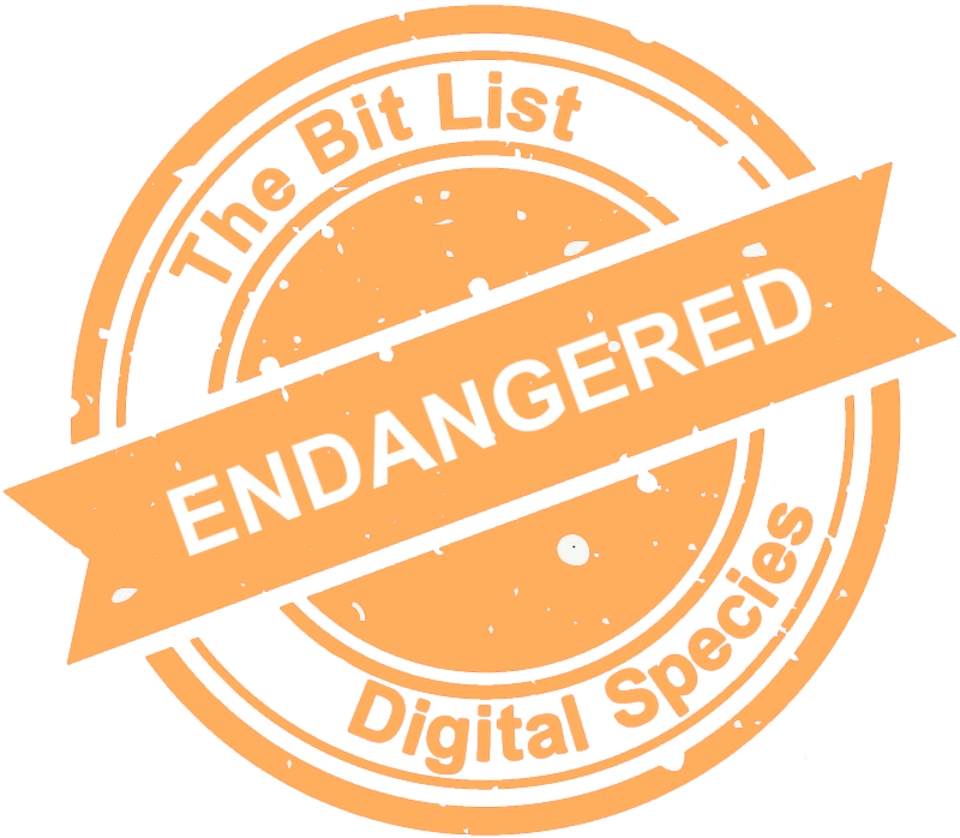3D Digital Engineering Drawings
 |
||
|
3D digital engineering models produced as part of building or engineering design processes. The production of such drawings has progressed from a digital analogue of paper to complex digital environments such as BIM (Building Information Modelling) which combine original drawings, libraries of compound objects, and links to external data sets such as about the performance of materials and maintenance of parts. |
||
|
Digital Species: Engineering Data |
Trend in 2023:
|
Consensus Decision |
|
Added to List: 2017 |
Trend in 2024:
|
Previously: Endangered |
|
Imminence of Action Action is recommended within three years, and detailed assessment within one year. |
Significance of Loss The loss of tools, data or services within this group would impact on many people and sectors. |
Effort to Preserve | Inevitability It would require a major effort to prevent or reduce losses in this group, possibly requiring the development of new preservation tools or techniques. |
|
Examples Building Information Management (BIM), Computer Aided Design (CAD), Product Data Management in engineering and architecture. |
||
|
‘Critically Endangered’ in the Presence of Aggravating Conditions Lack of skills, commitment or policy from corporate owners; lack of preservation mandate or collecting institution; lack of preservation capability in data owner; irregularities in supply chains; complex or long data supply chains; dependencies on proprietary software or formats; lack of persistent identifiers; uncertainty over IPR or the presence of orphaned works; temporary joint-venture companies; poor records management; poor regulatory compliance; encryption. |
||
|
‘Vulnerable’ in the Presence of Good Practice Well managed data infrastructure; preservation from the point creation; carefully managed IPR; persistent identifiers; well managed records management processes; recognition of preservation requirements at highest levels; strategic investment in digital preservation; host clearly identified; participation in the digital preservation community. |
||
|
2023 Review This entry was first submitted in 2017 when the Jury lacked the capacity to consider it in detail. In 2019 it was assessed with additional expertise co-opted, with the decision to remain a very broad category, including major one-off construction and engineering projects, a long tail of more minor building programmes, and large volume but homogeneous production processes in engineering. The 2021 Jury agreed with its Endangered status with an identified 2021 trend towards greater risk. They noted the key consideration that the lifecycle of the products and the data that describes them vastly exceeds the short life cycles of the infrastructures on which they are designed. This challenge is compounded by supply chains that may involve many different stages of production, as well as the delivery of large projects through transitory joint venture companies that have no residual mechanism or capacity to preserve the data thereafter. Although there had been advancements in the development of new preservation tools and techniques for these materials, there were recent examples of the loss of 3D architectural drawings; those have had a huge impact, especially at the local level, as well as significant impacts on infrastructure, travel, and how people interact with built environments throughout the world. The 2022 Taskforce agreed these risks remained on the same basis as before (‘No change’ to the 2022 trend). The 2023 Council agreed with the Endangered classification and seconded the trend reported last time; that risks continue on the same basis as before (‘No change’ to 2023 trend). Most of the complexities of the format and issues remained the same, such as reliance on proprietary software and complex or unknown copyrights with the datasets. Moving forward, it was highlighted by the Council that there needs to be a greater focus and understanding on the long-term preservation of these outputs within the sector. |
||
|
2024 Interim Review These risks remain on the same basis as before, with no significant trend towards even greater or reduced risk (‘No change’ to trend). Additionally, some Council members pointed to where there may be overlaps between the 3D Design Engineering Drawings and Formats species groups for this entry, in particular in ways to further address Step, PDF/E, STL, 3DM, etc. |
||
|
Additional Comments Data in this category enables the safety and security of critical infrastructure, but the responsibility to maintain data is unclear, nor are retention periods clear. Although examples of good practice exist, the extent to which there are working solutions at large seems doubtful, and it is surprising that there are not more diverse success stories to report. Case Studies or Examples:
See also:
|
||





































































































































